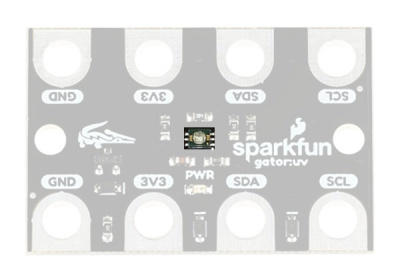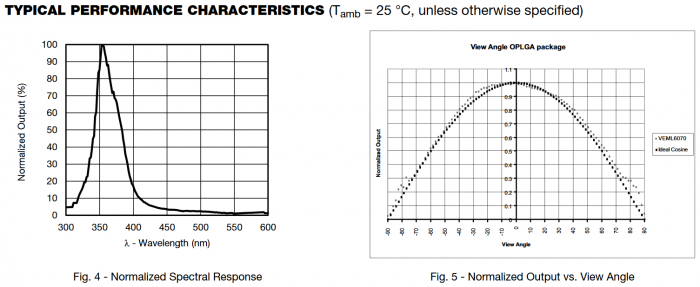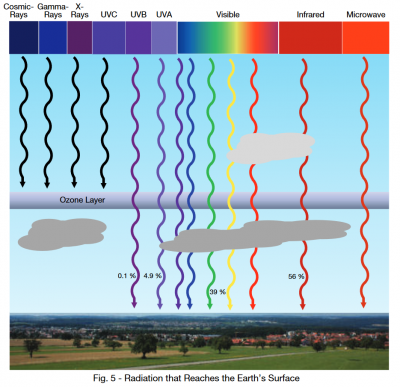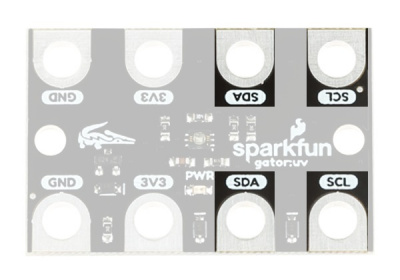SparkFun gator:UV Hookup Guide
Hardware Overview
The gator:UV consists of 4 pads for power and data.
| Contacts | Direction | Description |
|---|---|---|
| GND | N/A | Ground: Reference voltage and ground loop. |
| 3.3V | In | Power: Provides 3.3V to sensor. |
| SDA | Bi-directional | Data: Data and commands are transmitted between the sensor and microcontroller. |
| SCL | In | Clock: The microcontroller provides the timing needed to communicate on the data line. |
Power
The specified operating voltage for the VEML6070 is between 2.7V - 5.5V. For use with the gator:bit (v2) and micro:bit, you should provide 3.3V through the 3V3 and GND pads to keep the logic levels consistent.
VEML6070
The VEML6070 is a UV sensor that communicates over an I2C bus. The VEML6070 detects UVA radiation up to 328 mW/cm2 with a resolution of 5 µW/cm2. For the most part, users will only need to know I2C addresses to prevent address conflicts with other devices or sensors.
Here are some of the characteristics of the VEML6070 sensor from the datasheet:
| Characteristic | Range |
|---|---|
| Operating Voltage | 2.7V to 5.5V |
| Supply Current | 240 µA |
| UVA Detection | up to 328 mW/cm2 |
| UVA Resolution | 5 µW/cm2/step |
| I2C Address |
0x70 - Write Commands 0x73 - Read MSB of UV Data 0x71 - Read LSB of UV Data |
What is UVA Radiation?
UVA radiation is a specific part of the spectrum of the solar radiation from the Sun. UVA light has wavelengths between 320 nm and 400 nm. Approximately, 4.9% of all solar radiation that makes it to the surface of the Earth is UVA light. UVA rays are often associated with photoaging and the formation of skin cancer.
For more details on UV radiation, check out these online resources:
Some experiments and related topics for UVA radiation:
- Absorption and Exposure:
- Sunblock
- Photoexposure:
- Sun Sensitive Paper
- Ben from the Applied Science has a cool video on UV exposure.
- Effects on insects (like flies or bees):
I2C Connection
I2C is a communication protocol used to transfer data between master and slave devices. It is a 2-wire connection consisting of SDA (data) and SCL (clock). The protocol is pretty well defined so it can be shared with multiple devices. This is beneficial for daisy chaining multiple devices together on a single bus. The primary thing users will need to watch out for is address conflicts (you can't have devices with the same address).




